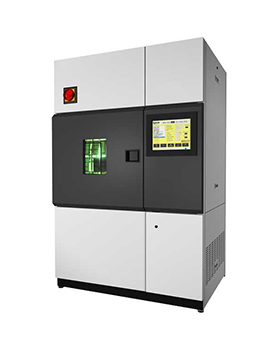The aging of all kinds of products causes billions of dollars of economic losses every year. The main material damages caused include: discoloration, loss of light, loss of strength, cracking, peeling, chalking and oxidation. It is clear that for many products, resistance to aging and light stability are important. Most researchers now use natural exposure methods, accelerated aging testers or xenon chambers for testing.
Natural exposure testing methods have many advantages: realistic, inexpensive, and easy to perform. However, most manufacturers are not willing to wait years to see if a new and improved product formulation has really improved. Accelerated laboratory aging testing is therefore known as a more efficient alternative. However, the question of whether to test with an accelerated aging tester or a xenon lamp chamber is often controversial.
Before answering the question of whether to choose an accelerated aging tester or a xenon chamber for testing, it is necessary to understand in more detail why materials age. The main factors that cause materials to age are light (especially ultraviolet light), high temperatures, and moisture conditions such as rain, dew, and high humidity, where light and moisture often act synergistically. Some materials have good durability under light or moisture conditions alone, but tend to fail under the synergistic effects of light and moisture.
Light
Different materials have different sensitivities to light. For durable materials, such as most coatings, plastics, short-wave UV is responsible for most polymer aging. However, for less durable materials, such as certain pigments and dyes, long-wave UV and even visible light can be a serious hazard.
High temperatures
Although temperature does not affect the primary photochemical reactions, it does affect the subsequent chemical reactions. Laboratory aging tests must provide precise temperature control and often accelerate aging by increasing temperature.
Humidity
Dew causes more damage than rain because it sticks to the material longer, creating more severe moisture absorption. What cannot be ignored, however, is the thermal shock caused by sudden drops of rain. For example, when a car in a hot summer day temperature rise but suddenly due to rain showers and rapid heat dissipation.
Any one of these three factors can cause material deterioration. They often act simultaneously, causing more harm than either factor alone would cause.

Accelerated Aging Tester
UV aging testers use fluorescent UV lamps to simulate the damaging effects of sunlight on durable and long-lasting materials. These lamps are electrically similar to cold white lamps used for general lighting, but they emit mainly UV light rather than visible or infrared light.
UVA-340 lamps best simulate sunlight in the short-wave UV band, and the spectral power distribution (SPD) of the UVA-340 matches sunlight very well from the sunlight cutoff point to about 360 nm. They cause faster aging of materials than UV-A lamps, but their shorter wavelengths than the sunlight cutoff can produce unrealistic results for many materials.
In the outdoors, materials have a damp state for 12 hours per day due to dew. To simulate outdoor moisture erosion more realistically. The accelerated aging tester reproduces outdoor dew moisture with a special condensation feature.

Xenon lamp tester
The spectrum produced by a
xenon lamp tester must be filtered to reduce unwanted spectral components. Three types of filters are often used, defined in ASTM G155: daylight, window glass, and UV extension filters.
Most xenon test chambers simulate the effects of humidity through a water spray or humidity control system. A limitation of water spray is that when cooler water is sprayed onto a warmer sample, the temperature of the sample will also decrease, which may slow the rate of aging. However, water spray does a fairly good job of simulating thermal shock and mechanical erosion.
Which solution is best?
There is no one test technique that will work for all materials and application conditions. The method you choose depends on your testing objectives, schedule, funding budget, etc. If it's too expensive to buy and too expensive to run, it has no real application value. This is why the purchase price, operating costs, and maintenance costs are some important factors that should not be overlooked. These factors should also be taken into account when considering the merits of test equipment.
Purchase price
Generally speaking, accelerated aging testers are much cheaper than xenon test chambers. For example, a xenon lamp tester can cost three times as much as an accelerated aging tester, depending on the test capacity and capabilities of the equipment3.
Sample capacity
UV and xenon aging chambers are about the same price, but their sample capacities are very different. The accelerated aging tester is approximately 5 times the capacity of the xenon tester. The capacity of the accelerated aging tester is also larger than that of the xenon tester, which has only 72% of the sample capacity of the accelerated aging tester.
Mainly for standards
The standard reference should be an important consideration in your choice of testing equipment, UV aging tester and aging tester have different standard application.

